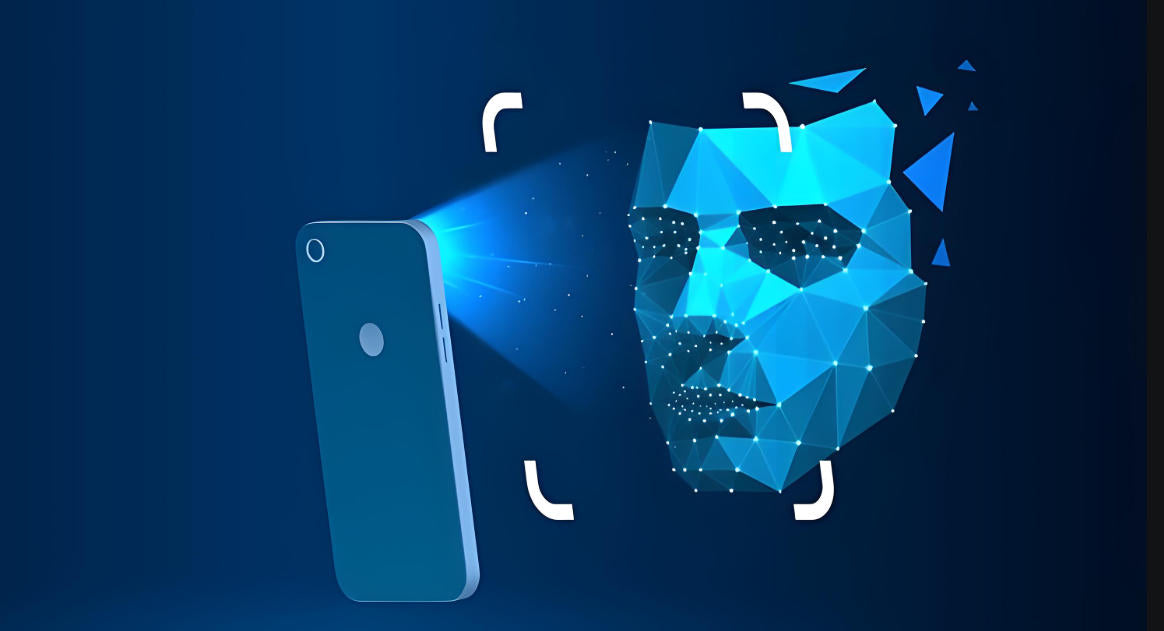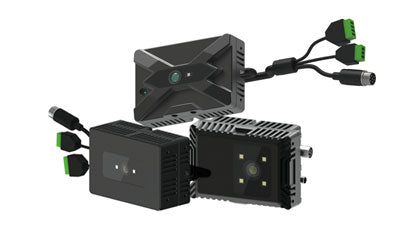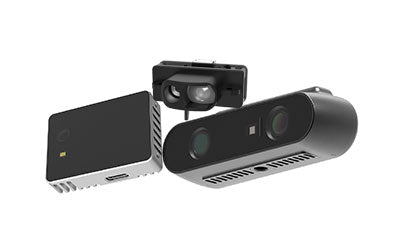TOF Cameras in Smartphones: How 3D Perception Transforms Interaction

How do TOF cameras in smartphones enhance 3D perception for better photography and AR experiences?
As smartphone capabilities continue to evolve, TOF (Time-of-Flight) (https://en.wikipedia.org) cameras have become a key technology for enhancing user experience. Through high-precision 3D perception, TOF not only revolutionizes face recognition and payment security but also demonstrates enormous potential in AR/VR, gesture interaction, and future intelligent interaction scenarios. This article explores the development, applications, and future trends of TOF in smartphones, naturally integrating keywords such as TOF camera, 3D perception, mobile 3D face recognition, mobile AR applications.
What is 3D Perception?
3D perception refers to the ability to capture and understand three-dimensional spatial information of objects or environments using various sensors and technologies, including their position, shape, depth, and movement characteristics.
Its core goal is to enable computers, robots, or smart devices to 'understand' the spatial structure of the real world for more precise operations and interactions.
Common applications include:
-
Augmented Reality (AR) & Virtual Reality (VR): Scanning environments to enable accurate integration of virtual objects into real space.
-
Robot Navigation & Obstacle Avoidance: Using 3D information to plan paths and avoid obstacles.
-
Smartphones & Face Recognition: Generating high-precision depth maps via TOF or stereo cameras for 3D face recognition and gesture interaction.
-
Autonomous Driving: Using LiDAR and cameras to perceive the 3D structure of roads, vehicles, pedestrians, and surroundings.
In short, 3D perception allows devices to understand spatial shapes and positions, enabling smarter interactions and decision-making.
TOF Technology in Smartphones: Development and Current Status
Time-of-Flight (TOF) technology measures the time it takes for a light pulse to travel to a target and back, providing precise depth information and enabling high-accuracy 3D perception in smartphones. From initial flagship applications to widespread adoption in mid-range devices, TOF’s evolution reflects both hardware advancement and cost reduction, driving innovation in mobile interaction.
1. First Applications in High-End Flagships
The earliest TOF camera applications were concentrated in high-end flagship devices:
-
Apple: Introduced TOF in the iPhone X series and later models for Face ID, enabling secure unlocking and payments while providing precise depth data for AR applications.
-
Huawei: Integrated TOF into Mate and P series for 3D portrait photography, AR interactions, and spatial scanning, improving photo quality and interactivity.
-
Xiaomi: Added TOF modules to the Mix series to support AR enhancements, gesture control, and scene reconstruction, expanding smartphone capabilities.
These early high-end applications primarily focused on security authentication, AR interaction, and photography enhancement, showcasing TOF’s precision and user experience value.
2. Technological Evolution and Multi-Function Trend
As TOF matured, its applications expanded:
-
From Depth Measurement → 3D Perception Modules: Initially used for distance measurement and depth assist, TOF evolved into comprehensive 3D perception modules for gesture recognition, spatial scanning, and scene reconstruction.
-
Multi-Camera Integration: Combining TOF with RGB, ultra-wide, and low-light sensors enables precise background blur, portrait segmentation, and enhanced low-light photography.
-
AI Integration: AI algorithms analyze TOF depth data for dynamic gesture recognition, AR game interactions, and indoor measurements.
3. Mid-Range Adoption and Cost Reduction
With lower sensor manufacturing costs, TOF is gradually entering mid-range devices:
-
Wider adoption: TOF is no longer exclusive to flagship phones.
-
Functional democratization: Mid-range phones use TOF mainly for enhanced photography (background blur), AR experiences, and fun interactions like gesture recognition and measurement tools.
-
Improved user experience: TOF enhances photo, video, and AR precision, making everyday operations more intuitive and intelligent.
4. Future Development Directions
-
Higher Precision & Lower Power Consumption: Future TOF sensors will offer higher frame rates, longer range, and lower power usage for complex scenarios.
-
Multi-Sensor Fusion: TOF will integrate with LiDAR, RGB, or multi-camera systems for richer 3D perception and AR functionality.
-
AI Deep Integration: TOF will support dynamic gesture interaction, motion capture, and intelligent scene recognition, beyond static distance measurement.
Overall, TOF technology transforms smartphones from 2D interaction to real 3D spatial perception, enhancing security, photography, AR, gesture control, and smart home interactions, making 3D perception a standard feature in modern smartphones.
How TOF Enables Precise 3D Face Recognition and Payment Security
Smartphone TOF cameras emit infrared pulses and measure the reflection time to generate high-precision depth maps, enabling 3D facial modeling. Compared with traditional 2D cameras, TOF offers significant advantages in speed, accuracy, and security, especially for mobile payment and identity verification.
1. 3D Face Modeling Principles
TOF cameras work as follows:
-
Infrared Emission: TOF modules emit invisible infrared pulses toward the user’s face.
-
Reflection Measurement: Pulses reflect off facial features and return to the sensor; TOF measures the travel time.
-
Depth Map Generation: Distance data per pixel creates a complete 3D facial depth map.
-
AI Recognition & Matching: The depth map is compared with a registered 3D model for fast authentication.
This method captures subtle facial contours, ensuring precision and anti-spoofing.
2. Anti-Spoofing Capability
3D modeling makes TOF highly effective against fraudulent attacks:
-
Photo attacks: Flat photos lack depth; TOF detects and rejects them.
-
Video attacks: Moving video cannot replicate real 3D structure; TOF identifies anomalies.
-
Mask attacks: Masks differ in depth from real faces; TOF distinguishes them.
3. Mobile Payment & Identity Verification
Combined with AI, TOF ensures secure face recognition:
-
Fast payment authentication: Millisecond-level recognition for unlocking or payments.
-
Multi-factor verification: Works with fingerprint, password, etc., for higher security.
-
Continuous monitoring: Dynamically tracks depth data to prevent account misuse.
4. Application Scenarios
TOF 3D face recognition is used in:
-
Phone unlocking
-
Mobile payments (Apple Pay, Huawei Pay)
-
Access control & identity verification (offices, smart homes, public facilities)
-
Personalized services (AR effects, virtual try-on, expression recognition)
5. User Experience Benefits
TOF enhances both security and usability:
-
Fast recognition: Typically within hundreds of milliseconds.
-
High accuracy: Minimal impact from facial expression changes.
-
All-weather performance: Works in darkness or strong light.
In summary, TOF cameras combined with AI provide high-precision, fast, and reliable 3D face recognition, ensuring secure mobile payments and identity verification while improving overall user experience, making it a core technology in modern smartphone security and interaction.
Enhancing AR/VR Experiences: Space Mapping and Gesture Recognition with TOF
Smartphone Time-of-Flight (TOF) cameras are not only used for 3D face recognition but also play a critical role in AR/VR (Augmented Reality/Virtual Reality) experiences. By rapidly scanning environments and generating high-precision 3D spatial models, TOF provides essential data for blending virtual and real-world scenes. Combined with gesture recognition technology, users can interact naturally with virtual objects without touching the screen, greatly enhancing immersion and interactivity.
1. High-Precision Spatial Mapping
TOF cameras measure the return time of light pulses to create high-precision depth maps of the environment, enabling accurate 3D spatial modeling:
-
Room and Furniture Scanning: Quickly generates 3D models of indoor spaces, including tables, chairs, walls, and floors, supporting AR interior design, virtual furniture placement, and layout preview.
-
Object Modeling: Small objects can be scanned to create virtual assets that can be interacted with in AR/VR scenes.
-
Real-Time Updates: TOF dynamically updates depth data as the environment changes, ensuring virtual content aligns with the real world.
2. Gesture Recognition and Natural Interaction
TOF depth sensing combined with AI algorithms can detect hand movements and postures for precise gesture control:
-
Finger Movement Detection: Accurately tracks finger bending, opening, tapping, and swiping for fine control.
-
3D Position Tracking: Recognizes hand position and orientation in 3D space, enabling drag, rotate, and scale operations for virtual objects.
-
Multi-Gesture Support: Supports two-hand or multi-hand operations for complex interactions like virtual painting, gaming, or collaborative applications.
3. Integration of Virtual Scenes with Real Environments
TOF technology allows seamless blending of real-world environments with virtual content:
-
AR Gaming: Players interact with virtual characters within their real room, increasing immersion.
-
Virtual Try-On and Interior Design: Users can try clothes or adjust furniture layouts with spatial mapping and gestures, receiving realistic feedback.
-
Education and Training: Simulates labs, surgical procedures, or mechanical maintenance training, providing intuitive interactive environments.
4. Immersive Experience Enhancement
TOF’s 3D depth perception significantly improves AR/VR experiences:
-
Natural Interaction: Users manipulate virtual objects directly with gestures, without controllers or screen touches.
-
High Precision & Low Latency: Millisecond-level depth updates ensure virtual objects move in sync with user actions, reducing lag.
-
Enhanced Environmental Awareness: Virtual elements accurately map onto real environments, enhancing spatial and visual realism.
5. Application Scenarios
TOF applications in AR/VR are rapidly expanding:
-
Entertainment: AR games, virtual character interaction, holographic experiences.
-
Shopping & Retail: Virtual try-on, furniture placement, space planning.
-
Education & Training: Simulated labs, skill training, remote collaboration.
-
Social & Communication: Gesture interaction, virtual meetings, immersive social experiences.
In summary, TOF-based spatial mapping and gesture recognition extend AR/VR experiences beyond the screen, enabling natural interaction with virtual scenes and enhancing immersion, interactivity, and practical value for smartphone AR/VR ecosystems.
Main Smartphone Brand Comparisons (Apple, Huawei, Xiaomi, etc.)
Different brands implement TOF cameras differently:
-
Apple: Face ID and payment security, emphasizing precise depth sensing and privacy protection.
-
Huawei: Uses TOF for AR enhancement, photography, and spatial mapping, supporting multiple scenarios.
-
Xiaomi: TOF + AI gesture recognition to expand AR features and smart home control.
-
Performance Comparison: Apple leads in recognition accuracy and security; Huawei excels in scenario applications and AR versatility; Xiaomi offers competitive cost control and mid-range adoption.
Brand differences reflect the diversified development of TOF cameras in terms of functionality and optimization.
Future Trends: Intelligent Interaction with TOF + AI
As TOF technology matures, its deep integration with Artificial Intelligence (AI) is ushering in a new era of smartphone and mobile terminal human-computer interaction. By combining 3D depth sensing with intelligent algorithms, TOF + AI enhances AR/VR experiences while empowering mobile payment, security verification, smart assistants, and metaverse applications for more natural, intuitive, and personalized interactions.
1. Multi-Modal Intelligent Interaction
TOF and AI enable multi-modal interaction experiences:
-
Gesture Recognition: TOF captures hand movements; AI analyzes gestures for drag, rotate, and scale operations.
-
Facial and Expression Recognition: AI uses TOF depth data to detect facial expressions, supporting dynamic input, authentication, and emotion recognition.
-
Voice and Touch Integration: Combines voice commands with gestures for hybrid interaction, improving efficiency and naturalness.
Users can perform complex operations without relying on physical buttons or screen touches, making interaction more intuitive and natural.
2. Context Awareness and Smart Assistant Enhancement
TOF + AI enables devices to have environment and context awareness:
-
Spatial & Positional Awareness: 3D depth data determines user location and hand position in real-time.
-
Behavior Prediction & Intent Recognition: AI predicts user actions based on history, such as gesture intent or object approach.
-
Optimized Smart Assistant Response: Devices proactively offer operation suggestions, auto-adjust functions, or trigger shortcuts based on user behavior and environment.
This context awareness allows devices to interact more intelligently and proactively with users.
3. AR/VR and Metaverse Applications
TOF + AI provides core technology for immersive virtual experiences:
-
High-Precision Spatial Mapping: TOF generates 3D spatial data for precise alignment of virtual and real objects.
-
Natural Gesture & Motion Interaction: AI interprets TOF data for accurate control and interaction with virtual objects.
-
Metaverse Interface: TOF serves as a key interface for interacting with virtual spaces, enabling immersive social, gaming, remote work, and virtual experiences.
Precise spatial perception and motion tracking allow users to move, interact, and operate naturally in virtual worlds, greatly enhancing immersion and realism.
4. Mobile Payment and Security Verification
TOF + AI also plays a key role in security and payment scenarios:
-
3D Face Recognition: Generates high-precision depth maps to prevent photo, video, or mask attacks.
-
Dynamic Motion Verification: Combines gesture or motion recognition to improve payment and authentication security.
-
Multi-Scenario Identity Verification: Supports access control, financial payments, and app login, enhancing convenience and safety.
5. Future Outlook
The future of TOF + AI intelligent interaction will feature:
-
Comprehensive Sensing: Full detection of gestures, face, voice, motion, and environment.
-
Natural, Seamless Interaction: Users can manipulate virtual objects as if they were real.
-
Personalized Intelligence: Devices adapt interaction based on user habits and context.
-
Cross-Device Connectivity: TOF + AI data supports coordinated interaction across phones, AR/VR devices, smart homes, and metaverse terminals.
The integration of TOF + AI will lead the next generation of human-computer interaction, transitioning from 'operational interaction' to 'perceptive, predictive, and immersive interaction,' delivering secure, natural, and intelligent user experiences.
Conclusion
The rise of TOF cameras is transforming smartphone interaction. From 3D face recognition and secure payments to immersive AR/VR experiences and AI-driven multi-modal interaction, TOF technology offers users safer, smarter, and more immersive experiences. As the technology matures and becomes widespread, TOF cameras will become an essential core feature of smartphones, laying a solid foundation for future mobile intelligent terminals.
Synexens 3D Of RGBD ToF Depth Sensor_CS30
Our professional technical team specializing in 3D camera ranging is ready to assist you at any time. Whether you encounter any issues with your TOF camera after purchase or need clarification on TOF technology, feel free to contact us anytime. We are committed to providing high-quality technical after-sales service and user experience, ensuring your peace of mind in both shopping and using our products.






